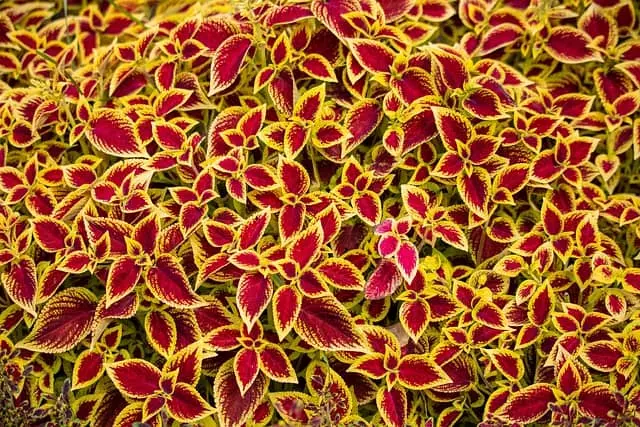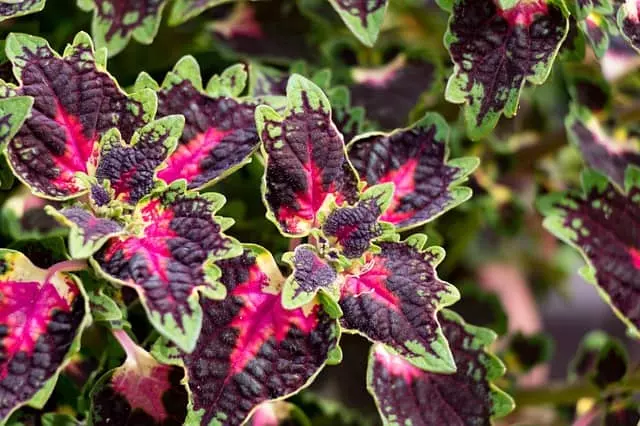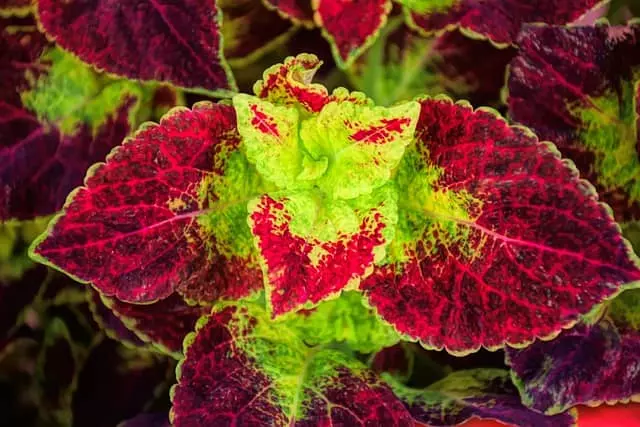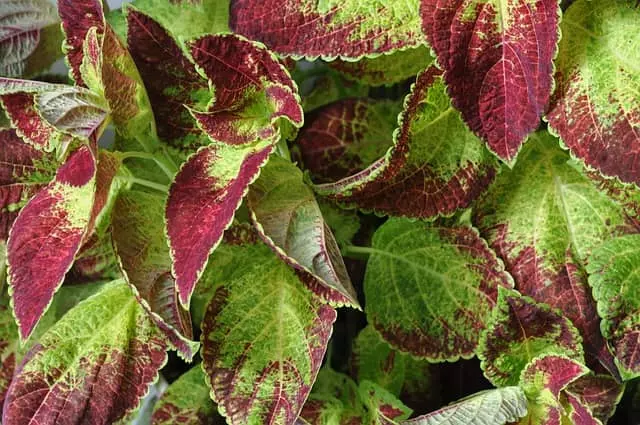The coleus is one of those plants that even fewer gardening enthusiasts will immediately recognize having seen many times. It is very easy to care for species, widespread in many countries as a houseplant. Learn all about how to care for the coleus plant in this article.
If you want to know more about the characteristics and care of the coleus, keep reading this article in which we will learn more about this beautiful and resistant plant, ideal for beginners or amateurs without much time.
Table of Contents
Characteristics Of the Coleus Plant
With the scientific name Solenostemon sp, the coleus is a semi-bushy plant, which outdoors can reach up to one meter in height, but in pots, as it is usually grown, it rarely exceeds half that size. They are tropical plants, which have their origin in Southeast Asia, which is why they are treated here as indoor plants, as they do not tolerate exposure to low temperatures.
The most striking feature of the coleus is its variegated leaves, with a velvety texture and highly appreciated for their great aesthetic and decorative value. Currently, there is a large number of hybridizations and types of coleus, with different shades of leaves or a different arrangement of these, and it is one of those plants that shines not for its flowers, if not for its beautiful leaves.
It is not a complicated care plant but, as always, if you want your plants to be as beautiful and healthy as possible, you will need to know what they need.

Climate And Temperature for Coleus
This plant, as with many other species of tropical origin, does not tolerate either low or excessively high temperatures, which is why it is almost always placed indoors. However, if you live in an area with mild temperatures, you may be able to grow it outdoors or, at least, take it out of the pot at certain times.
The coleus is at its best at a temperature of around 68°F (20 ºC), although it can withstand exposures as low as 50°F (10 ºC) without too many problems. Only when it is carefully acclimatized can it withstand exposures close to 32°F (0 ºC), although it is always a risk to subject it to this type of temperature.
It is always best to bring it indoors when the outside temperature drops to 50°F (10 ºC) or below to avoid unpleasant surprises. We recommend these Coleus seeds (Order here).
Location And Light for Coleus
Light is probably one of the most important cares for this plant, which needs a well-lit environment and for many hours, but always with indirect light or with light filtered by suitable curtains. The ideal is to leave it near a window, but be careful that the sun’s rays do not reach it directly, with the added magnifying effect of the glass.
If you have coleus with limp or dull leaves, it is probably because it is not getting enough light, while if its leaves appear dry or burned, it may be receiving intense direct sun.
It is also important to place your pot in an area away from sudden temperature changes such as near an air conditioner or heater and to protect it from drafts.

Care for Coleus Plant – Watering Coleus
The other key to the care of this plant is its watering. In this case, the watering of the coleus should be measured but frequent, never allowing the substrate to dry out completely, but also avoiding at all costs waterlogging.
In winter, on the other hand, it is better to let the plant go into vegetative rest, spacing out the frequency of watering so that the cold and humidity do not rot its roots.
The coleus also needs a certain level of humidity, but we do not recommend spraying water on its leaves. Instead, it is better to use the gravel bed method: place a dish with water under the pot, and cover it with gravel or stones just enough so that the pot and its drainage holes are not in contact with the water. In this way, moisture will rise to the plant without puddling the soil or affecting its leaves by excess water.
Substrate And Fertilizer for Coleus
The most important thing with the substrate of this plant is that it has the best possible drainage, so the universal mixture of coconut fiber (Order here), peat, and worm castings in equal parts, with the addition of a handful of vermiculite and perlite, will work great.
Regarding fertilizer, it is very important and needs a good supply of organic matter or liquid fertilizer during its growth period and the months of activity.

Care for Coleus Plant – Pruning and Repotting
The only pruning this plant needs are the maintenance pruning once a year to remove the parts in bad condition, although sometimes it is also recommended to prune the flowers when it gives them, as they are not very pretty and this way it saves energy.
Repotting coleus is not necessary often, although the plant is fast-growing and, if you want it to continue to gain in size, you will have to do it every time it fills its pot, which will happen often. Learn more about cinnamon for plants, benefits, and uses.
How To Recover a Coleus
Dull or badly damaged coleus will require repotting it into a new, slightly larger pot with nutrient-rich soil and adequate moisture levels. If your area is very dry, you can resort to the gravel and water dish method under the pot, so you won’t have to water as often and risk rotting the roots. If you do this and place it properly, in just a few weeks your plant should recover quickly.
We hope this article on how to care for coleus plant will be of great help.


